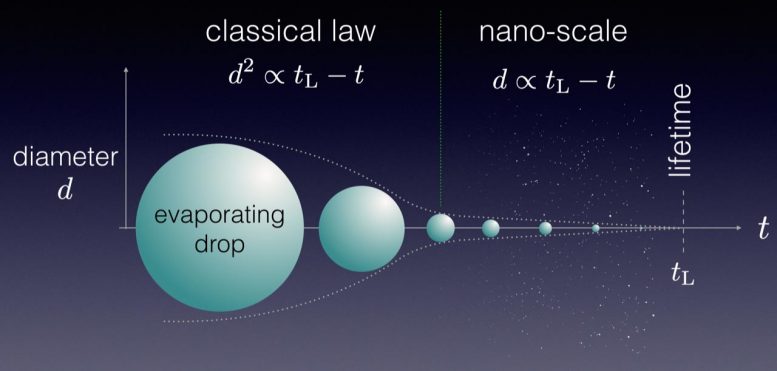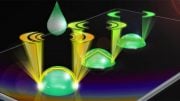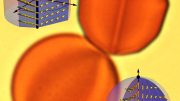- Liquids evaporating into vapor is a daily occurrence, and yet the time it takes a liquid droplet to completely evaporate has remained a mystery
- Researchers at the University of Warwick have analyzed this process down to the nano-scale to reveal fascinating new physics in the vapor’s flow
- The new theory, which accurately predicts the lifetime of droplets can now be exploited for engineering design
The lifespan of a liquid droplet which is transforming into vapor can now be predicted thanks to a theory developed at the University of Warwick. The new understanding can now be exploited in a myriad of natural and industrial settings where the lifetime of liquid drops governs a process’ behavior and efficiency.
As part of the earth’s water cycle, water evaporates into vapor, resulting in plumes coming from a boiling kettle and bulging clouds. Evaporating liquid drops are also widely noticed, such as when morning dew evaporates from a spider’s web, and are important for technologies such as fuel-injection combustion engines and cutting-edge evaporative cooling systems for next-generation electronics.
Researchers from the Mathematics Institute and School of Engineering at the University of Warwick have had the paper ‘Lifetime of a Nanodroplet: Kinetic Effects & Regime Transitions’; published in the journal Physical Review Letters on October 9, 2019, in which they explore the lifespan of a liquid droplet.
Current theories state that the droplet’s diameter-squared decreases in proportion to time (classical law); however, this period only accounts for a small portion of the drop’s evolution. As the diameter approaches the unobservable micro- and nano-scale, molecular dynamics have to be used as virtual experiments and these show a crossover to a new behavior, with the diameter now reducing in proportion to time (nano-scale law).
Research at Warwick has shown that this behavior occurs due to complex physics in the vapor flow, which can result in jumps in temperature across just a few molecules as large as 40 degrees! This behavior is counter-intuitive to our daily experiences (on the macroscale), where we are used to temperatures changing relatively gradually, but must be accounted for to accurately predict the final stages of an evaporating drop’s life.
Prof Duncan Lockerby from the School of Engineering at the University of Warwick comments:
“The main achievement here is the theory’s ability to quickly predict the drop’s lifetime and create a modeling framework that maintains accuracy from typical engineering scales down to cutting-edge nanoscale applications”
Dr. James Sprittles from the Mathematics Institute at the University of Warwick comments:
“It is fascinating that intuition based on everyday observations are a hindrance when attempting to understand nanoscale flows, so that, as in this research, one has to lean on theory to enlighten us.”
###
The research is supported by grants from the Leverhulme Trust and the Engineering and Physical Sciences Research Council (EP/N016602/1, EP/P020887/1 & EP/P031684/1).
Reference: “Lifetime of a Nanodroplet: Kinetic Effects and Regime Transitions” by A. S. Rana, D. A. Lockerby and J. E. Sprittles, 9 October 2019, Physical Review Letters.
DOI: 10.1103/PhysRevLett.123.154501










Be the first to comment on "Fascinating Nano-Scale Analysis Reveals the Lifetime of an Evaporating Liquid Drop"